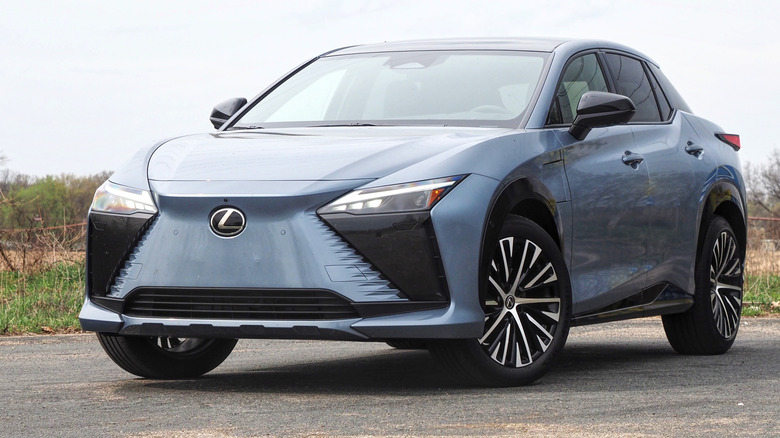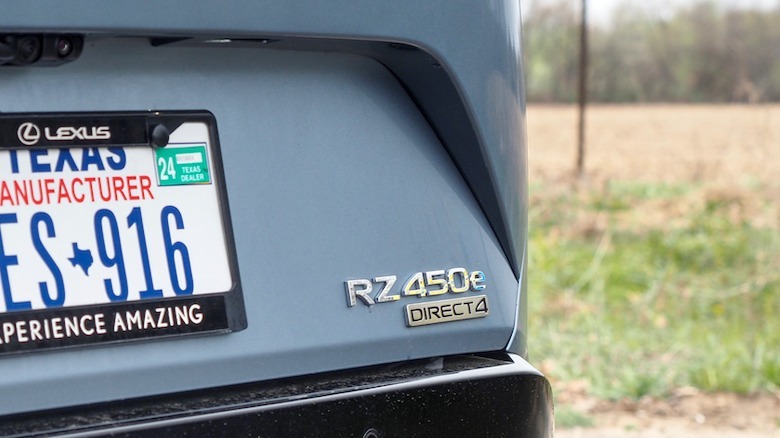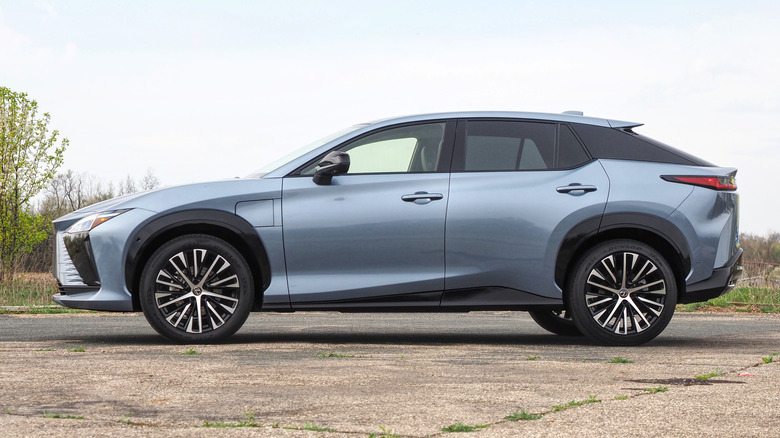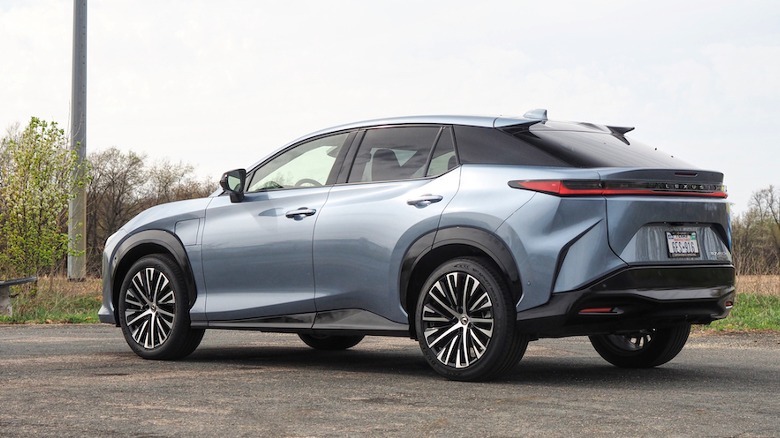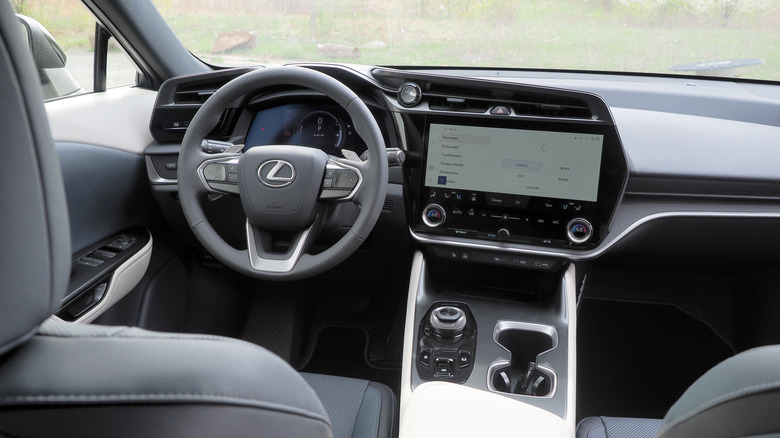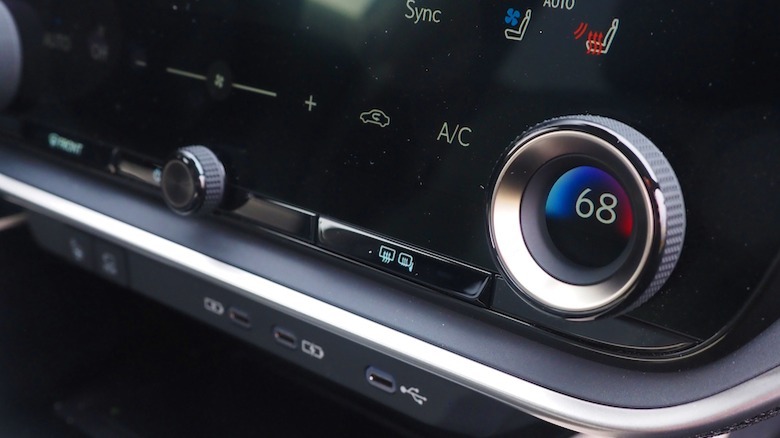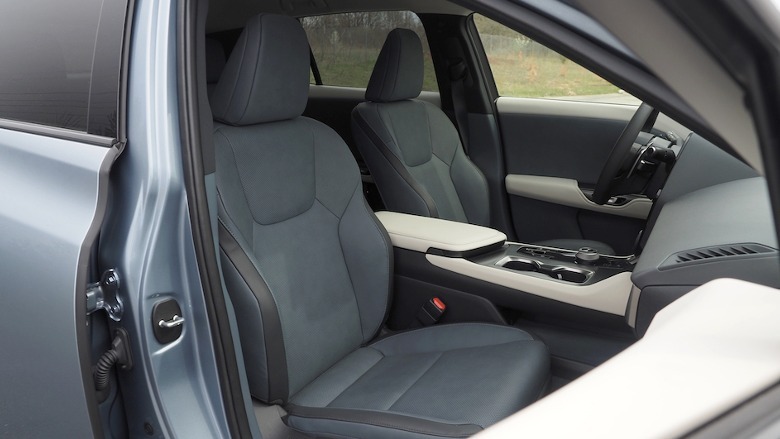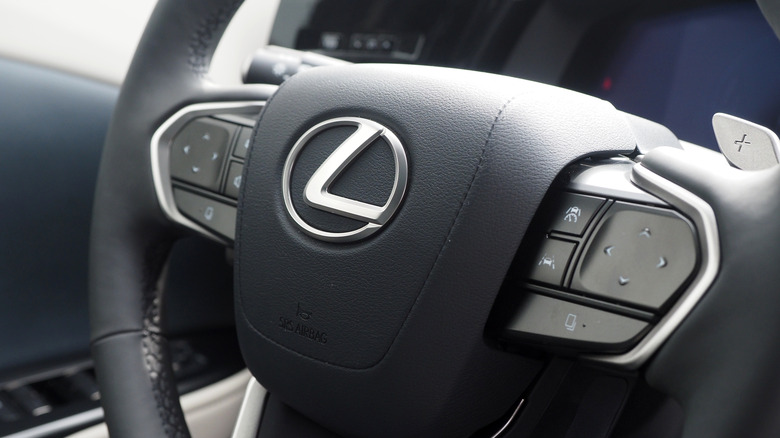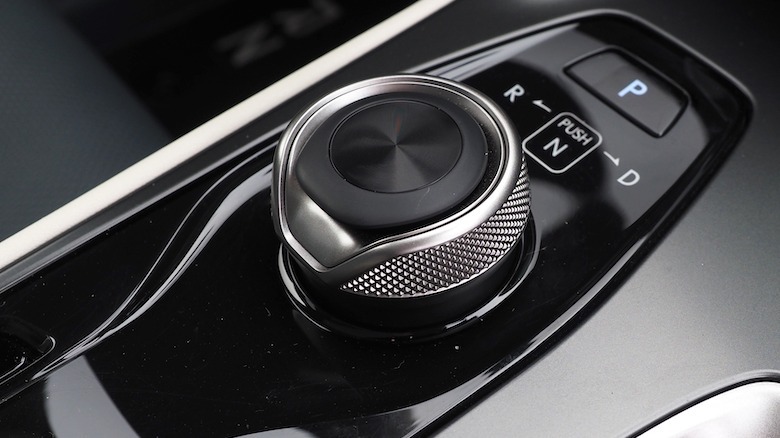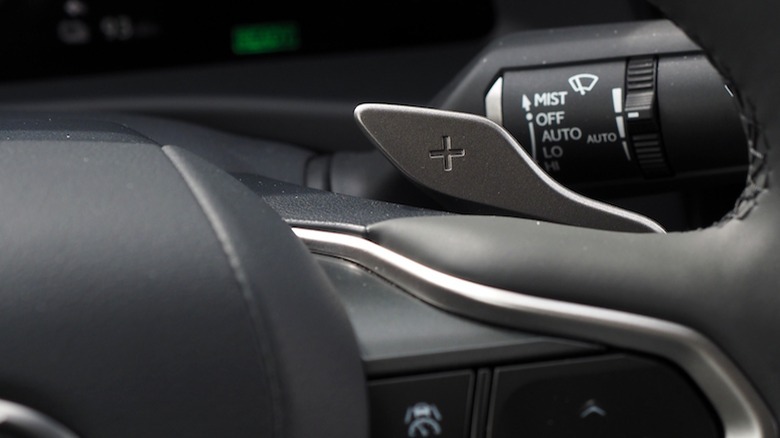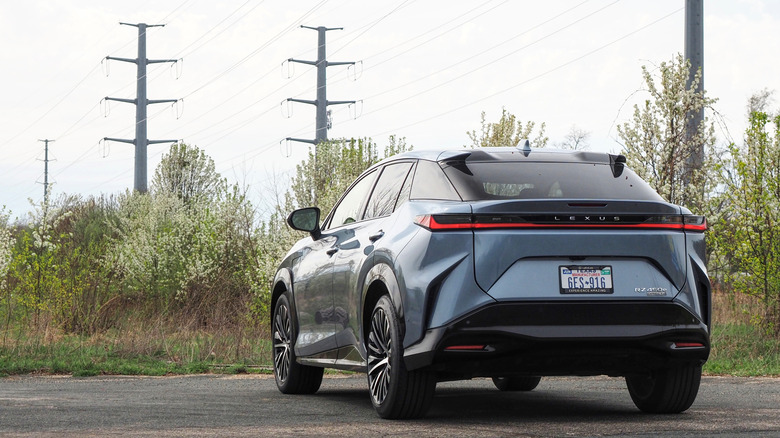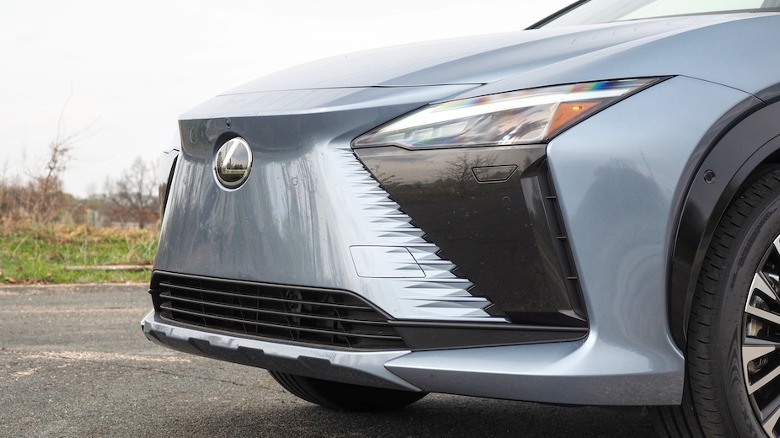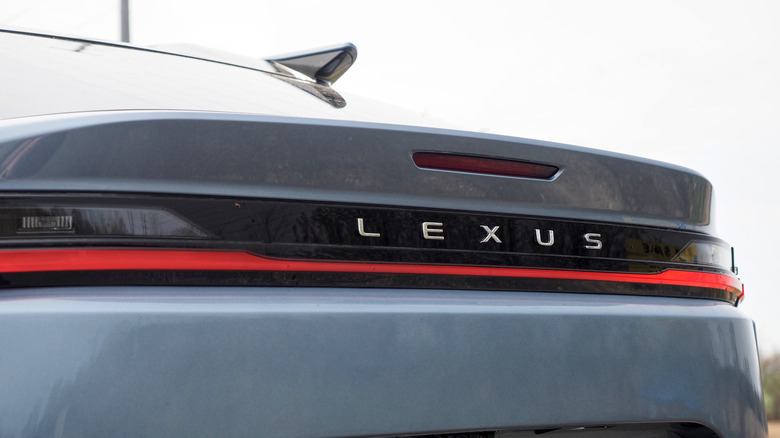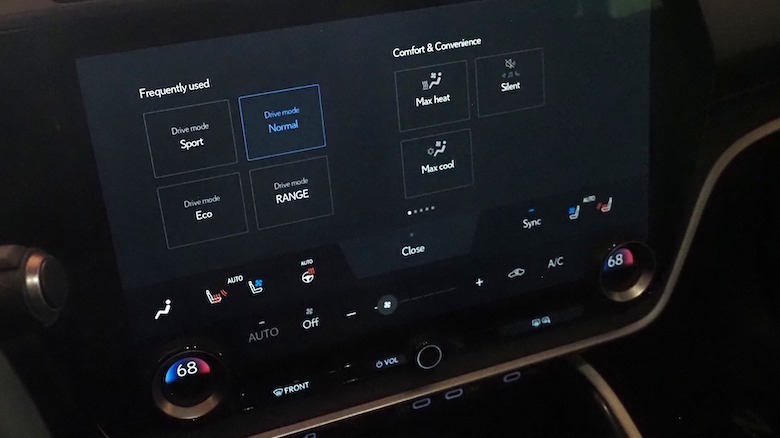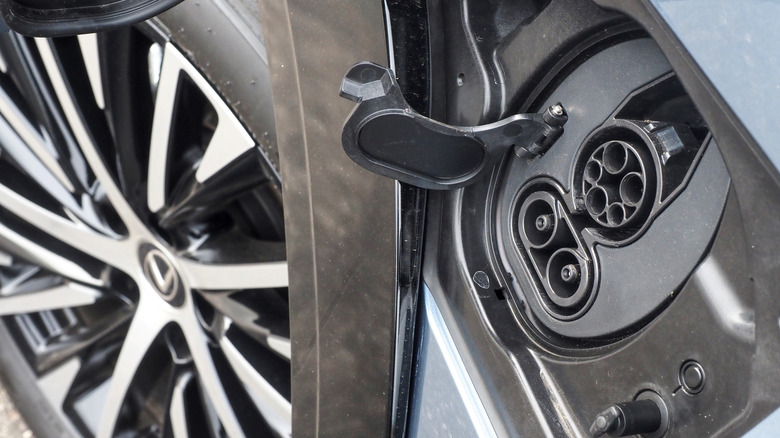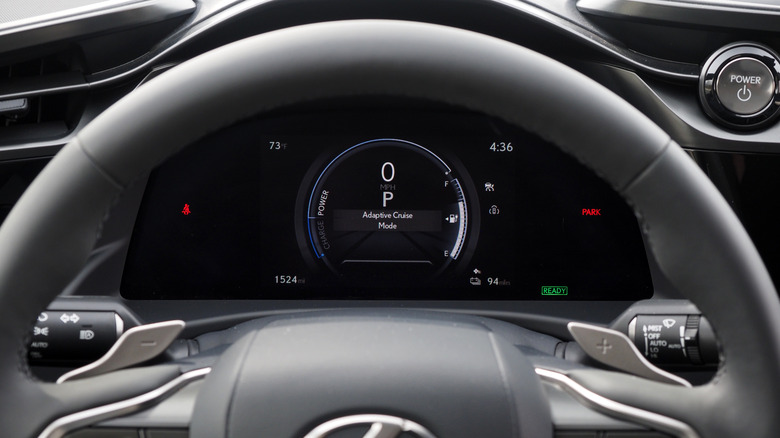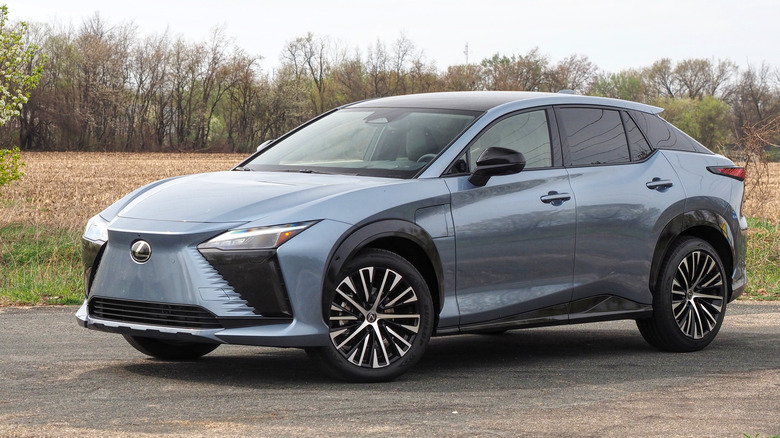2023 Lexus RZ 450e Review: Refined Electric SUV Stumbles Where It Matters
- Smooth refinement befitting of the Lexus badge
- Healthy levels of standard equipment
- Spacious cabin
- Range underwhelms
- Slower charging than rivals
For an automaker obsessed with quiet comfort, Lexus has been oddly slow to embrace fully electric vehicles. The arrival of the 2023 Lexus RZ 450e is a big deal for Toyota's luxury arm, but it's also a laggard in terms of the broader industry. Mercedes, BMW, and Audi have all had electric SUVs for some time now; Genesis has been punching above its weight with its electrified line-up; and even if Cadillac is struggling to build enough Lyriq, there's no doubt that demand is there.
The RZ, then, can't afford to be an afterthought. The good news is that — with one exception — Lexus' offering on paper is excellent. Competitively priced from $59,650 (plus destination, and before any incentives or rebates), well-equipped, and distinctive enough to stand out among its SUV rivals (and, for that matter, its Lexus stablemates), the RX 450e feels like everything we hoped from the automaker when electric SUVs began appearing a few years back.
Problem is, that "one exception" is a sizable one. With 196-220 miles promised, Lexus finds itself offering the range we'd associate with electric SUVs a few years back, too.
Sleek style and a new spindle
For those who have called for Lexus to get rid of its controversial "spindle" grille, the RZ is a reminder that specificity is important. The gaping, Predator-esque maw of the RX may be absent here, but Lexus merely blanks out the EV's fascia and leaves the hourglass silhouette. The cooling requirements of an electric car are different — and focus on different places — and so the few, smaller front vents that remain are sufficient for the RZ's needs.
Though officially an SUV, by Lexus taxonomy, the low hood and sloping roofline of the RZ give it a hint of the hatchback in profile. No bad thing, aesthetically or aerodynamically, and I prefer the simplified C-pillar kink here compared to the fussier design on the internal combustion SUVs. Lexus' contrasting wheel arch cladding adds some heft, though it does also leave the arches themselves looking bigger than they really are, and the wheels a little small.
The rear is, to my eyes, the most successful angle. From the sharp, flying buttress-style roof extensions, to the crisp trunk-spanning light bar and narrow light clusters, it plays with straight lines and curves in a way that leaves the RZ looking solid and confident. It's worth noting that the RZ I spent the week with is a pre-production prototype, though Lexus says that's more about trim and finish than the drivetrain hardware.
A spacious and well-equipped cabin
Inside, despite the relatively low roofline, there's plenty of space for adults in both rows, plus a healthy 34.9 cu-ft of trunk space. The center console is dominated by a sizable 14-inch touchscreen, running the latest iteration of Lexus' infotainment software. It's a huge improvement on older versions, with "Hey Lexus" voice control that proved accurate and responsive, clearer and crisper graphics, and a more straightforward layout. A persistent section at the bottom handles HVAC settings and the standard seat heating/ventilation, while a shortcut summons a quick-launch mode that can collate your most-used features such as flipping between drive modes.
Wireless Apple CarPlay and Android Auto are standard, as is a wireless phone charging pad, and five USB-C ports spread around the cabin. Parking assistance is standard on the RZ Luxury trim and optional on the Premium, as is phone-as-key (which also demands a Remote Connect subscription, which will cost you after the bundled three-year trial). Only the Luxury trim has the 13-speaker, 1,800W Mark Levinson audio system, Traffic Jam Assist, and Lane Change Assist.
The Luxury trim gets heated rear seats, acoustic front and rear glass, and multi-color ambient lighting. There's also Lexus' radiant front knee heater, which is a $175 option on the Premium trim. Either way, animal-friendly materials are standard: Premium trim cars get NuLuxe faux leather, while Luxury trim cars have Ultrasuede. A head-up display is standard on the Luxury trim and optional on the Premium, as part of the $1,425 Technology Package.
Don't wait for the yoke
There's a lengthy list of safety equipment, pretty much all of it fitted as standard. Lexus Safety System+ 3.0 includes adaptive cruise control, pre-collision alert with pedestrian and intersection support, lane departure alerts and assistance, lane tracing assist, road sign assist, and blind spot warnings with rear cross-traffic alert. A digital rearview mirror is a $200 option.
Eventually, Lexus plans to offer its yoke steering wheel in the U.S. and, though it won't be the first to do so — looking at you, Tesla — it's arguably the first to do it right. That's because the RZ's steer-by-wire system supports a variable steering ratio, allowing Lexus to adjust just how much steering angle you get when you turn the actual wheel. Rather than just chopping the top off the wheel and calling it a day, finessing the ratio means Lexus can deliver the full range of steering angles without demanding hand-over-hand turns.
It'll be an option, even when it arrives on North American cars, and frankly I'm not sure it'll be the most necessary one. The same goes for Lexus' $200 illuminated front badge; I'd probably suggest spending that on the equally-priced Cold Weather Package, which includes headlamp washers and windshield wiper de-icer. Conspicuous by its absence, however, is the option of a larger battery, and that's a problem.
Where's the range?
Range is the headache here, and I'm just not sure Lexus is offering enough to match the RZ's promises. Final EPA numbers aren't available at time of writing, but Lexus estimates that — at best — the RZ 450e will go up to 220 miles on a charge from its 71.4 kWh battery (of which about 64 kWh is usable). That's assuming it has the 18-inch wheels. Step up to the 20-inch versions that come standard on the Luxury trim, and total range dips to an estimated 196 miles.
They are, frankly, underwhelming numbers. They were fairly underwhelming back in 2018, when Audi launched the e-tron SUV with 204 miles of range, and today — when a Tesla Model Y Long Range will go up to 330 miles on a charge, and is $10k cheaper than the RZ 450e Premium — they're only really acceptable from EVs considerably more affordable than the Lexus is.
The RZ 450e also suffers from some of the most conspicuous range loss due to non-propulsion drain that I can recall seeing recently. The HVAC system is a particular culprit, with merely turning it on sufficient to instantly chop several dozen miles of potential driving from the on-screen estimate. Getting into a fully-charged RZ and finding the dashboard promising 118 miles is disconcerting; that flipped to 171 miles when I switched from Normal to Range mode, which among its other frugalities will shut off the climate control.
Fun while it lasts
Range mode also tempers the accelerator mapping, leaving the RZ without what's otherwise its big saving grace: it's actually surprisingly fun to drive. The smaller battery, helping achieve a curb weight of 4,564 to 4,619 pounds (trim depending), and 308 horsepower from the twin electric motors make it feel perkier than the 5.0 second 0-60 mph time might suggest.
It's a smooth, composed ride, and though there's body roll in the corners — even in Sport mode — the RZ never feels unsettled. In fact, it's a whole lot like a Lexus NX or RX, only with the instantaneous torque that we're increasingly familiar with now from electric vehicles. You can dash and dart around urban settings with enough punch to surprise those in gas-powered cars, while highway jaunts and overtaking are well within the Lexus' comfort zone.
The cabin is noticeably hushed — as well it should be, given that's just what Lexus owners expect — and the RZ lacks the aggressive, artificial soundtrack that a lot of EVs suffer. In fact, you could well make the argument that Lexus is long overdue for this sort of full electrification because it really does suit the luxury automaker's ethos.
Slower charging
When it comes to charging, meanwhile, there's support for up to 150 kW DC fast charging. That could take you from 0-80% in around 30 minutes, Lexus says, which is solid but definitely not the fastest EV out there. A Kia EV6, for example, can handle over 230 kW DC fast charging.
As for home charging, with a Level 2 unit, you're looking at around 9.5 hours for a full charge. Lexus sticks with the Toyota bZ4X's underwhelming 6.6 kW onboard charger for that, which is slow compared to the 9.6 kW that a Mercedes-Benz EQB uses, and seems positively archaic next to the Cadillac Lyriq's 19.2 kW version.
Slow onboard charging isn't the only place where the RZ feels oddly tired despite being brand new. The driver's digital instrumentation screen is standard, but the panel Lexus uses feels dim and lacks saturation. The screens in other EVs are much more vivid.
Lexus has a road trip compromise
Perhaps, for all its bold words about its first full EV, Lexus knows it might be a tough sell for all but the most aggressively electric-ready drivers. Buy or lease a model year 2023 or 2024 RZ, and you'll also get membership in the Lexus Reserve program. It offers 30 days of Lexus car rental that can be used in the three years following that new purchase/lease date.
It's managed through the Lexus app, and the cars themselves are handled by the automaker's network of dealers. You can blow all 30 days on a single reservation, or break them up for road trips when you don't want to be concerned with finding DC fast chargers along the way. It's worth noting that you need to provide your own transferable insurance coverage, and be over 21 (or more, state-depending), and loaner cars must be returned to the dealership they were borrowed from: no one-way trips.
As reassurances go, it's a sensible one (Lexus is not, it should be pointed out, the first automaker to try this). Nonetheless, it's a Band-Aid that other EVs simply don't require.
Lexus RZ 450e Verdict
Plenty has been said about Toyota's attitude toward fully electric vehicles over the past decade. The automaker's continued insistence on hybrids being the most cost-effective and audience-friendly application of EV technology has seen the Prius — positively seductive in its latest generation — become an enduring sales success. At the same time, though, it leaves Toyota (and, by turn, Lexus) playing catch-up when it comes to BEVs.
Whether Toyota and Lexus leadership think such vehicles are the future or not, the reality is that it's the 2023 RZ 450e that has to hold up in dealerships. With the same underpinnings — and thus some of the same compromises — as the Toyota bZ4X, Lexus' style, and cabin tech are writing checks that its drivetrain just can't cash.
As a result, while I like the comfort and refinement of the Lexus RZ 450e, the paucity of its real-world range leaves it a tough recommendation in a rapidly advancing segment. The merits of electrification make it an ideal foil for the automaker's long-standing goals of hushed performance, but it may take a second-generation platform to deliver an EV experience worthy of the Lexus badge.
